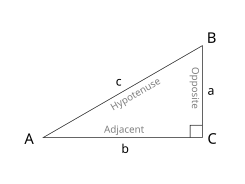MEASURE OF CENTRAL TENDENCY
Single value in series of observation which indicate the characteristics of observation.
All data/values clustered around it and used to compare between one series to another.
Measures:
a. Mean (Arithmetic/ Geometric/Harmonic)
b. Median
c. Mode
MEDIAN
Median is what divides the scores in the distribution into two equal parts.
Fifty percent(50%) lies below the median value and 50% lies above the median value.
It is also known as the middle score or 50th percentile.
MEDIAN OF
UNGROUPED DATA
•Arrange the
scores(from lowest to highest or highest to lowest)
•Determine the
middle score in a distribution if n is an odd number and get the average of the
two middle most scores if n is an even number.
EXAMPLE
•Find the median
score of 7 students in an English class.
x(score)
19
17
16
15
10
5
2
MEDIAN OF GROUPED DATA
Formula:
Median= l + ( (n/2-m)/f)*c
Where l=Lower limit of the median class
f=Frequency of the
median class
c=Width of the median
class
N=The total frequency
m=cumulative
frequency of the class
preceeding the median class
PROPERTIES OF MEDIAN
•It may not be an
actual observation in the data set.
•It can be applied
in ordinal level.
•It is not affected
by extreme values because median is a positional measure.
APPLICATION OF
MEDIAN
•It is used to
measure the distribution of the earning.
•Use to find the
players height e.g. Football players.
•To find the middle
age from the classroom students.
•Also used to find
the poverty line.
MODE
The mode or the modal score is a score or scores that occurs in the distribution.
It is classified as unimodal, bimodal, trimodal or multimodal.
CLASSIFICATION OF
MODE
•Unimodal is a distribution of scores that consists of only one mode.
•Bimodal is a distribution of scores that
consist of two modes.
•Trimodal is a distribution of scores that
consist of three modes or multimodal is a distribution of scores that consist
of more than two modes.
MODE FOR GROUPED
DATA
Formula:
Mode= l+ ( f-f1 /2f-f1-f2) *c
Where l=lower limit of the modal class
f=frequency of modal
class
c=class width of the
modal class
f =frequency of the
class just preceeding the
modal class
f2=frequency of the
class succedding the
modal class
PROPERTIES OF MODE
•It can be used
when the data are qualitative as well as quantitative.
•It may not be
unique.
•It is affected by
extreme values.
It may not exist
APPLICATION OF
MODE
•It is used to
influx of the public transport.
•The number of
games succeeded by any team of players.
•The frequency of
the need of infants.
•Used to find the
number of the mode is also seen in calculation of the wages, in the patients going to the hospitals, mode
of travels, etc.,
CONCLUSION
• A measure of
central tendency is a measure tell us where the middle of a bunch of data lies.
•Median is the
number of present in the middle when the number in a set of data are arranged
in ascending or descending order.
•Mode is the value
that occurs most frequently in a set of data.

 can be any numbers whatsoever (except that
can be any numbers whatsoever (except that  cannot be
cannot be  ), and the
), and the  which satisfy the equation. That is to say, to find all the solutions of the equation.
which satisfy the equation. That is to say, to find all the solutions of the equation.












